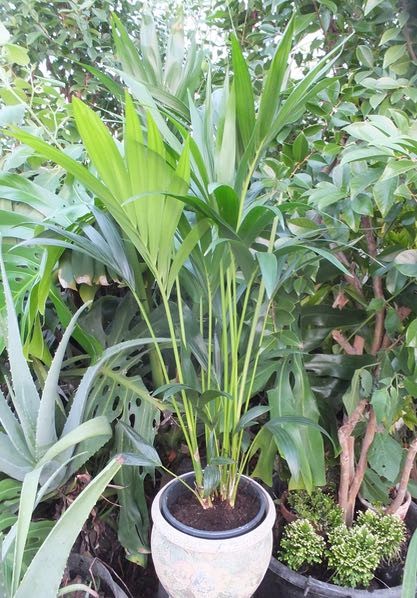
These stately palms have long been seen in many fin de siècle drawing rooms, as backdrops on film sets and at all sorts of large events, indeed as often as simply decorating conservatories and greenhouses. Discovered on Lord Howe Island off the coast of New South Wales this Australian palm, Howeria, rapidly became incredibly popular acquiring several common names such as Sentry Palm, Thatch Leaf or Flat leaf Palm, Paradise Palm and Kentia Palm. Indeed it is said that collecting the plants and seed were one of the few industries of this island. These palms became one of the mainstays of the ‘rented’ plant industry being provided for adorning all sorts of events from marriages to balls as they are able to stand the constant transport and moving about without sustaining much damage.
Coming in two very similar species, Howeria belmoreana and H. forsteriana, the Kentia palms eventually reach 25 feet and 60 feet high, fortunately both remaining much smaller for many years, and longer when contained in relatively small tubs. The main difference between these, other than eventual height, is the width of their pinnate leaves otherwise these are remarkably similar. Both will eventually (after decades) yellow green fruits though these then taking many more years to ripen after their first flowering.
Although these palms can be raised from seed these are also very widely available as young plants. Originally in Victorian houses these would have been grown singly but nowadays to give more impact several are more usually grown together. Initially this group is short but very smart and with lush green foliage makes a handsome table decoration. Then as the palms grow taller they need moving up to a larger tub and can then be stood on the floor. It will take many years for these to ever become too large for convenience.
Their major reason for becoming so popular is that these are very tough plants shrugging off adverse conditions yet looking good almost anywhere with little attention. In dusty conditions these only need wiping over with warm water to look superb again. Few pests or diseases ever trouble them though domestic pets can sometimes find their slender trunks eminently chewable, easily stopped by painting on the bitter yellow Aloe vera sap.
Naturally these need frost free, even warm, conditions but they are quite easy going as to compost (as long as it is well drained) and fit most situations tolerating quite shady positions. Beware, sudden bright harsh sunlight can burn the leaves. However providing they are hardened off these can even go outdoors for the summer months where they benefit from the fresh air and rain.










